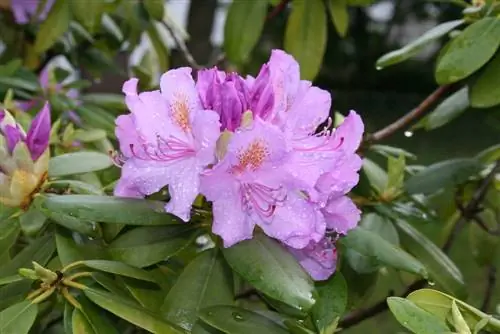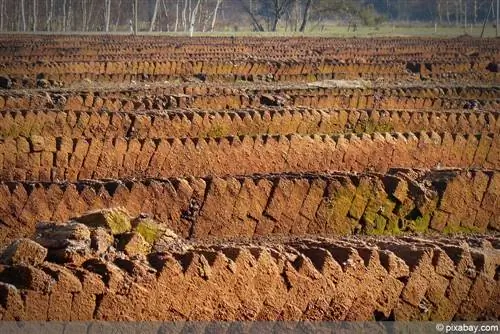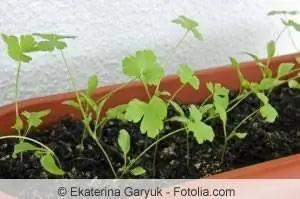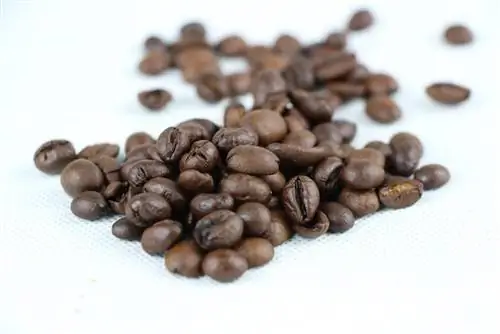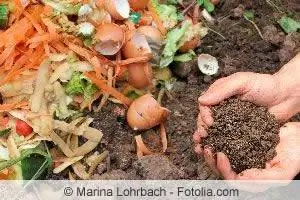- Author admin [email protected].
- Public 2023-12-17 03:39.
- Last modified 2025-01-24 12:45.
Peat is obtained in its pure form from moorland areas and then industrially processed into a special soil that contains many nutrients. These nutrients ensure that the soil has an acidic pH value when you enrich it with peat. This is an advantage for many plants because they love acidic soil and can develop particularly well.
Criticism of the use of peat soil
The use of peat in the garden is sometimes criticized. It takes decades for a bog with nutrient-rich soil to form. In addition, moorland areas provide a habitat for many animals and plants that are disturbed by peat mining. It is therefore recommended to avoid peat soil. However, this strictness is not necessary because there are numerous moorland areas in Germany and the population is in no way considered to be endangered. However, it is advisable to keep nature conservation in mind and use the peat soil sparingly. This not only protects the environment, but also makes work in the garden easier.
Reduce peat in the garden
If you only surround nutrient-rich soil with nutrient-rich soil for plant species that like acidic soil, you can use the soil without any concerns and you will avoid more effort in garden maintenance. However, it is not advisable to enrich the entire garden with peat soil.
Frequent watering required
However, there are also disadvantages associated with processing peat in the garden that you should be aware of before you decide to use it. This makes the soil very heavy and impermeable. It can no longer absorb large amounts of water. The result of this is that rainwater cannot penetrate deep into the ground. A large part evaporates on the surface. As a result, you must water any plant that is surrounded by peat soil regularly, especially in summer. The sun dries out the soil enriched with peat very quickly. As a result, the roots do not receive water and the plant cannot develop optimally. In the worst case scenario, it collapses.
Ensuring optimal care
If it rains for a long time and the soil is well moistened, you do not need to water because some of the water can be absorbed and soaks into the soil so that the plants can be optimally supplied. In any case, it is a good decision if you use the nutrient-rich peat soil for plants that prefer acidic soil. In most cases this will only be the case in a small part of your garden. As a result, the effort required for special care of the soil is manageable and you don't have to worry about nature conservation or the protection of the moors.
Tip:
When buying, make sure you choose high-quality clay soil that does not contain any chemical additives. Only then can you be sure that your plants are being optimally cared for.
Peat soil vs. nutrient-rich soil
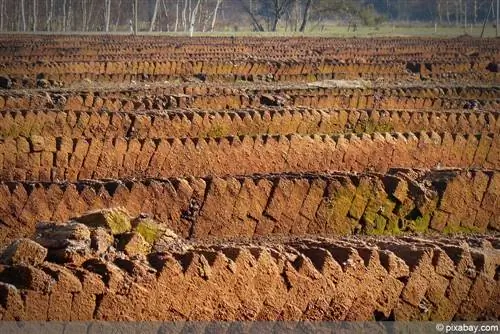
There are numerous plant species that prefer acidic soil and thrive particularly well in it. However, this does not mean that you cannot plant the species in normal, nutrient-rich soil. If you decide against using peat soil for various reasons, choose a classic potting soil that is enriched with compost. This potting soil has various advantages:
- is made from compost and is environmentally friendly
- inexpensive to purchase
- can be made yourself if you have a compost heap
When using potting soil, enrich the soil with an acidic fertilizer to optimally nourish the plants. However, use fertilizer sparingly and allow the soil to rest during the cold season, November to February. Then make sure that your plant always gets an ideal supply of nutrients, but is not oversupplied. In the worst case scenario, this can lead to the plant dying.
Tip:
When using fertilizer, pay close attention to the information on the packaging and do not add a little. The information is tried and tested and you are doing everything right in every case.
Create natural conditions
When creating a new garden or making changes, you will probably want to use new plant species. If you don't yet know the needs of a new plant, it is always advisable to take a close look at the care instructions. You can not only find out whether the plant prefers sun, shade or partial shade. You will also find out in which soil the plant thrives best. The information is taken from the origin of the plant. Through breeding, a plant that you can buy here and in Germany will be adapted to the conditions to a certain extent. This means that if it develops in acidic soil in the wild, it can also thrive in normal soil. Nevertheless, ensure some adaptation by learning about plant culture. The closer the conditions are to those of the natural environment, the more you will enjoy your plant.
Tip:
Acid soil is often mentioned in the description. These species like peat soil very much and you can plant the plant in such soil.
Keeping potted plants in peat soil
Not all species are hardy, and so you must ensure that you overwinter the plant in question indoors or in a winter garden. The soil in the plant pot should also be adapted to the needs of the plant. This means that you can also plant a plant that prefers acidic soil and thrives particularly well in peat in a container in soil with added peat. In this case, however, make sure to water particularly frequently so that the roots stay moist and are supplied with enough water.
Renew planting ends regularly
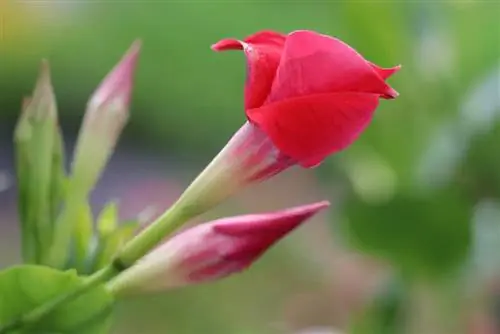
It is very important that you renew the soil on the potted plants at least once a year. Spring is a good time. If you can arrange to repot your plant in the spring and fall, it will thank you. This is particularly advisable if your plant is only housed in a very small pot. The nutrients are then quickly used up and the plant can no longer develop very well. New plant ends combine various advantages:
- fresh nutrient-rich soil
- light enrichment with fertilizer
- Soil is loose, the roots can develop well
- free from pests that can settle in the top after a long time
- Water is absorbed better
- Possibility of using a larger pot for better development of the plant
Liquid fertilizer for potted plants
The use of liquid fertilizer is a very good recommendation for potted plants. The rainwater cannot distribute the solid fertilizer so well in the pot. If you place the plant in a protected room in winter, watering will not be enough to distribute the solid fertilizer. Therefore, use liquid fertilizer for all potted plants that prefer acidic soil. This is especially true for potted plants that you have not planted in peat soil.
Tip:
Pay attention to the ratio of peat to traditional soil. This is particularly important for a potted plant, as the roots also need loose soil for he althy development. In the open field, insects and rainwater ensure good mixing. However, this is not necessary in pots and tubs.
Acid soil as a perfect basis for many species
Basically, peat is not harmful. If you live in a region where there is a lot of peat in the soil, this will not have a detrimental effect on the species that do not require acidic soil. The opposite is actually the case: peat soil has a high nutrient content from which most species benefit. However, it is not recommended to enrich the entire garden with peat. The protection of the moors, but also the fact that you have to water very frequently, speak against this. It is better to give the peat soil to the species that actually need it. Many well-known species that are hardy and are often planted in gardens love acidic soil. Here you can find out which species feel particularly comfortable in peat soil:
Rhododendron
Rhododendrons are particularly demanding when it comes to soil. They are one of the plant species that should definitely be planted in acidic soil or at least fertilized regularly. Especially if you live in a region where the soil is very fine and sandy. You may not have luck with a rhododendron there. Therefore, enrich the soil very well with peat soil. Since rhododendrons are heather herbs and have shallow roots, you do not need to dig the nutrient-rich soil too deeply. Rhododendrons are hardy and can grow very widely. You should take this into account when planning your garden.
Bergenie
The Bergenia is also often called Wickelwurzen in German usage. It produces very beautiful and large flowers that look particularly attractive in the garden. In its Asian homeland, bergenia prefers to thrive in very nutrient-rich soil. If you want to plant the plant in your garden, you should pay attention to acidic soil. Mix normal plant soil with peat and use solid or liquid fertilizer throughout the year. Bergenia is hardy and is only suitable as a pot plant to a limited extent. But it looks particularly attractive in rock gardens and front gardens.
Fern
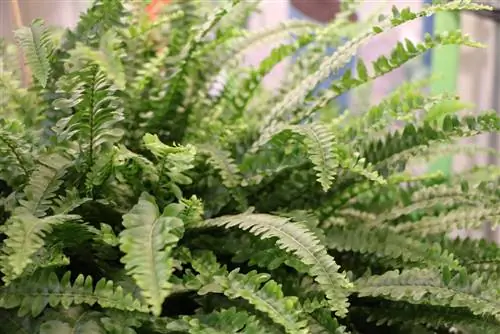
Ferns are very versatile and grow in forests and on the edges of meadows. These varieties are quite undemanding. There are a variety of varieties that you can use in the garden but also as houseplants. Make sure the soil is nutrient-rich, especially for houseplants and potted plants. The varieties that grow in local areas only require classic care and not necessarily special soil.
Pasqueflower
The common pasqueflower, also known as pasqueflower, is a very popular garden plant. The large flowers resemble a cowbell and gave the plant its name. You will find the pasqueflower on the edges of forests and meadows in the wild because it is native to our region. The plant loves acidic soil, so you should enrich the soil with peat if you want to plant the pasque flower in your garden.
Orchid
Orchids are houseplants that are quite demanding to care for. They develop beautiful flowers in bright colors that can bloom for a very long time. However, if they are lost, it can take years for the plant to produce a new flower. When caring for an orchid, make sure that the plant never dries out. But she shouldn't get her feet wet either. It is also important that orchids receive plenty of light and are not exposed to drafts.
Primrose
The primrose is an annual flowering plant. It is quite insensitive to cold and can be planted outdoors in pots and containers as early as February. Vigorous plants that are well cared for can bloom well into summer. If you like it, you can plant new primroses again in the fall. They will bloom until the first frost. If you enrich the container in which you plant the primroses with peat soil, the plant will produce particularly beautiful and strong flowers and it can also bloom for longer.
Iris
The iris is one of the most popular garden plants. It should be planted outdoors because it is not particularly suitable for pots and containers. The plant develops from a tuber that you insert deep into the soil. In spring it produces its long, pointed leaves. The flower then develops from this. Many lilies bloom yellow, white or purple. Unfortunately the flowering period is very short. It lies between May and July. Enrich the soil with peat once a year to provide the plants with optimal care.

